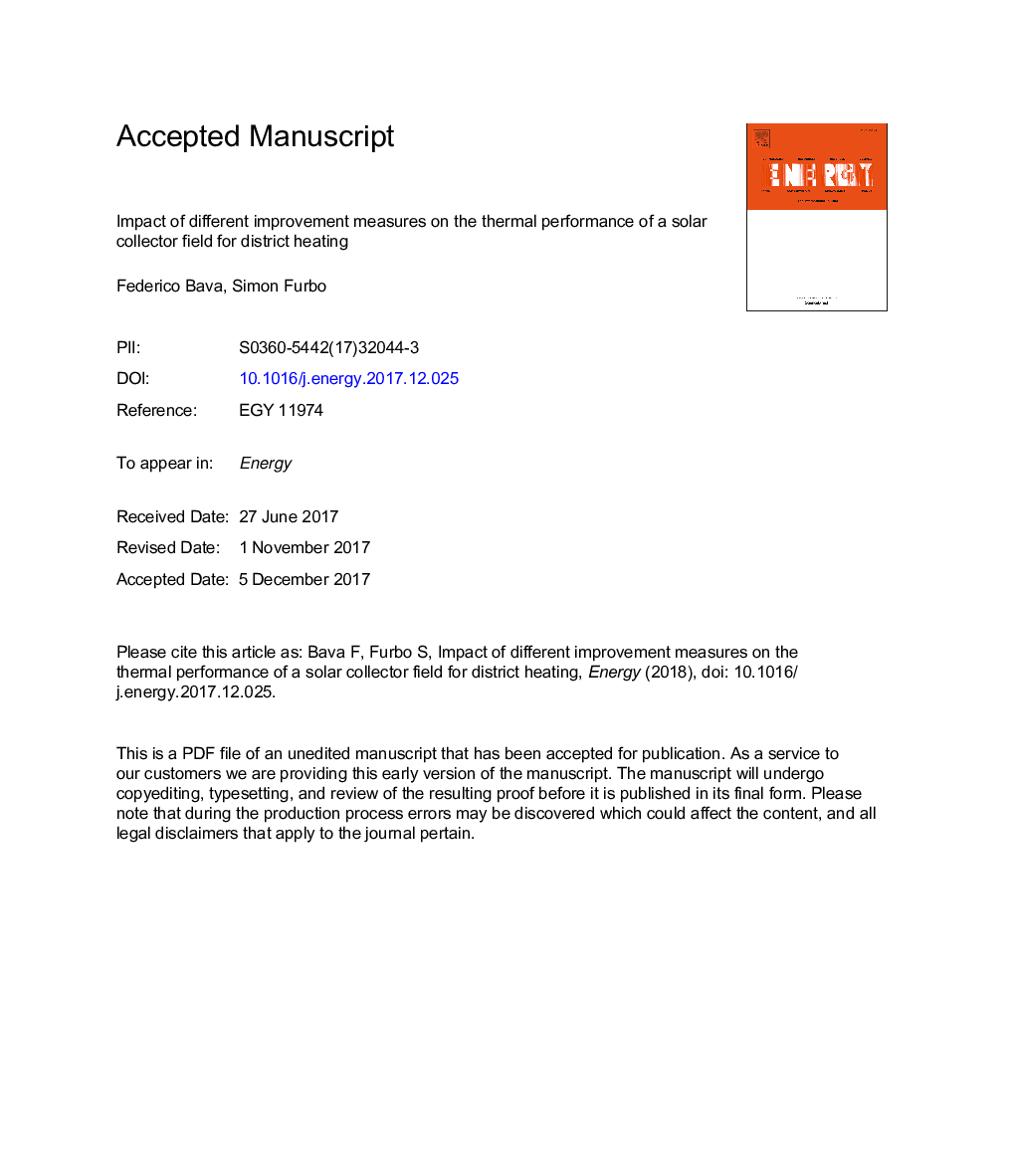| Article ID | Journal | Published Year | Pages | File Type |
|---|---|---|---|---|
| 8072379 | Energy | 2018 | 18 Pages |
Abstract
The paper describes the impact of different measures to improve the thermal performance of a solar heating plant for district heating applications. The impact of the different measures was evaluated through a validated TRNSYS-Matlab model. The model included details such as effect of the flow regime in the absorber pipes on the collector efficiency, flow distribution in the collector field, thermal capacity of the pipes and shadows from row to row. The improvement measures included variation of the operating temperatures, accurate input to the control strategy, feedback control on the outlet temperature of the collector field, control strategy based on weather forecast and use of different heat transfer fluids. The results showed that accurate input to the control strategy improved the yearly energy output of the plant by about 3%. If accurate input is not technically or economically feasible, a feedback control on the field outlet temperature seemed to be a valid alternative. The integration of weather forecast in the control strategy did not give relevant improvements. Higher glycol concentrations in the solar collector fluid gave better results than lower concentrations, as the higher frost protection guaranteed by the former outweighed the better thermophysical properties of the latter.
Related Topics
Physical Sciences and Engineering
Energy
Energy (General)
Authors
Federico Bava, Simon Furbo,
